At 33-years-old and having once lined up for Atlético Madrid as they won La Liga in 2014, you may be forgiven for thinking that Raúl García’s best days were behind him. Yet, under Gaizka Garitano, the attacking midfielder is proving that such statements could not be any further from the truth for the Athletic Club man.
Having put pen to paper on a new two-year contract, the Basque attacker has been one of the driving forces behind a bright start to the campaign for his side. With two goals in his first four games of the season, García has proven his value for the side having voluntarily removed any release clause from his contract this summer.
This scout report and tactical analysis will consider the statistics of the experienced former Osasuna man and provide an analysis of how he fits into the tactics of the Athletic side.
Physicality
In 2019/20, only Manu García of Alavés has made more fouls, whilst he has topped the table for fouls in 2018/19, finished second in 2017/18, 2016/17 and fifth in 2015/16. This ranking reflects not only La Liga but also a leading figure for all attackers in Europe. It has become a trademark element of his game, one which has continued to become prevalent more and more with each passing season, yet it is no coincidence. Garitano, in particular, has looked to capitalise on this attitude.
This is essential in Garitano’s game plan, particularly when it comes to making an early statement in fixtures. There is no better example than against Barcelona on matchday one, where less than two minutes had passed before García conceded his first foul of the season with a challenge on Frenkie de Jong. Conceding a free-kick deep in his own half proved to be of little threat to himself, yet made it clear from the off that Athletic would not allow to play the game on their own terms and immediately set the home side on the front foot in the midfield battle which would eventually decide the tie.
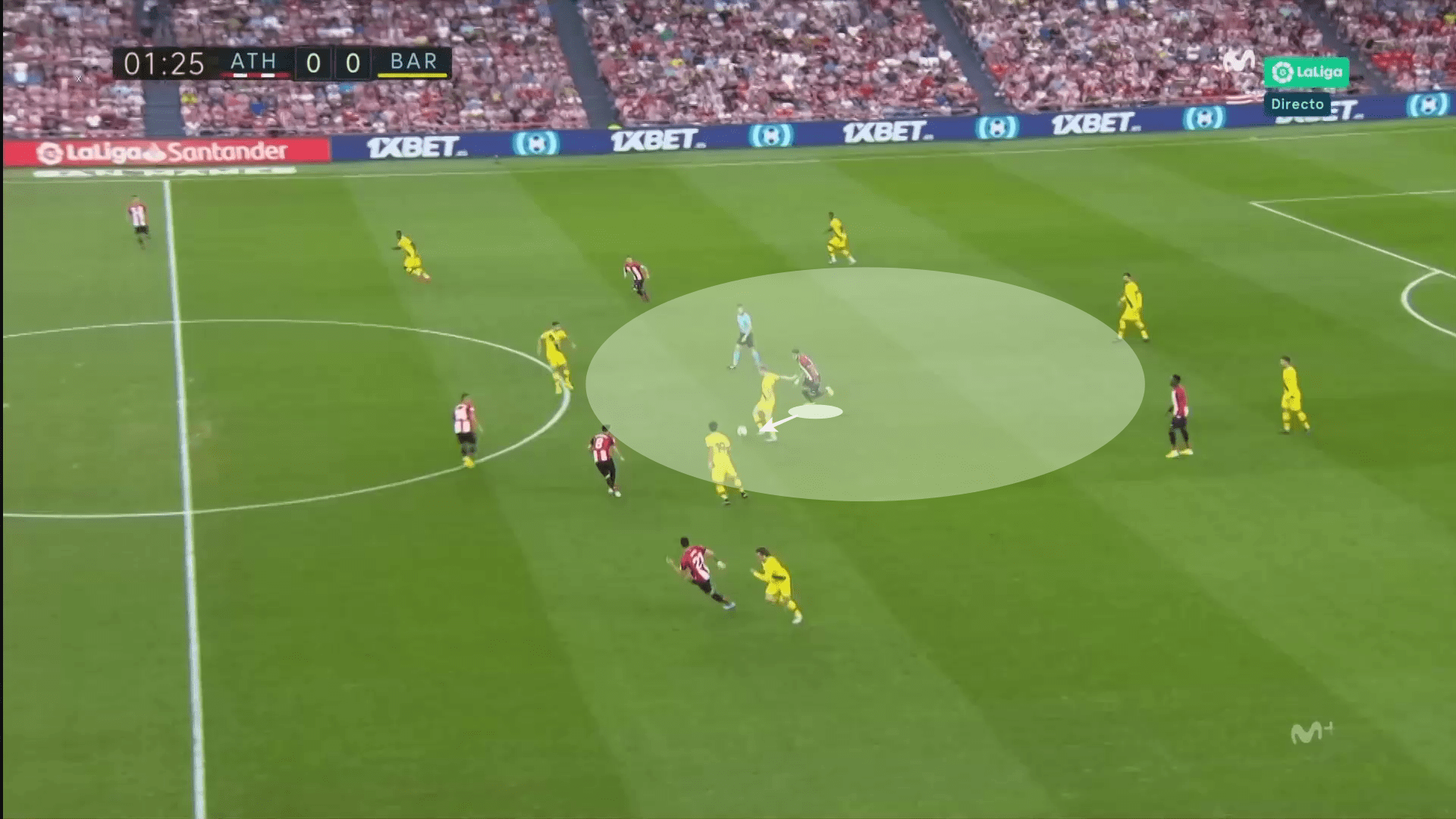
The example shown is also a clear demonstration of how García looks to dominate the area between midfield and attack. Sides like Barcelona with De Jong or Sergio Busquets, Real Madrid with Casemiro, Atlético Madrid with Thomas Partey or Valencia with Dani Parejo will look to dominate this area in order to give time and space for a holding midfielder to sit deep and control the flow of the game, dictating tempo and passing. García immediately denies this opportunity, instead looking to make that area of the field his own through any means necessary.
Aerial dominance
Just as with his leadership in La Liga for fouls per match, García also leads the way for aerial duels, having been inside the top five in the league for each of the past four seasons. In 2019/20, he has also climbed with his success rate, currently ranking fourth in the league at 42.5%. In the past two seasons, this success rate has actually fallen, having once reached between 55% and 60% on a regular basis, but has done so as his number of aerial duels has soared, going from nine per match in 2017/18 to almost 12 per match in the opening stages of 2019/20 as his team’s target man.
In the final third, this is primarily down to his movement. García is often one of the first to move and make runs but is disciplined in his approach of targeting the far post. In the below example from his goal against Getafe, as the ball spreads wide to Yuri Berchiche, he is already demanding the cross. As Getafe’s defenders are caught ball-watching and drift central, García continues his run and benefits, getting space at the far post to convert the cross with room to spare.
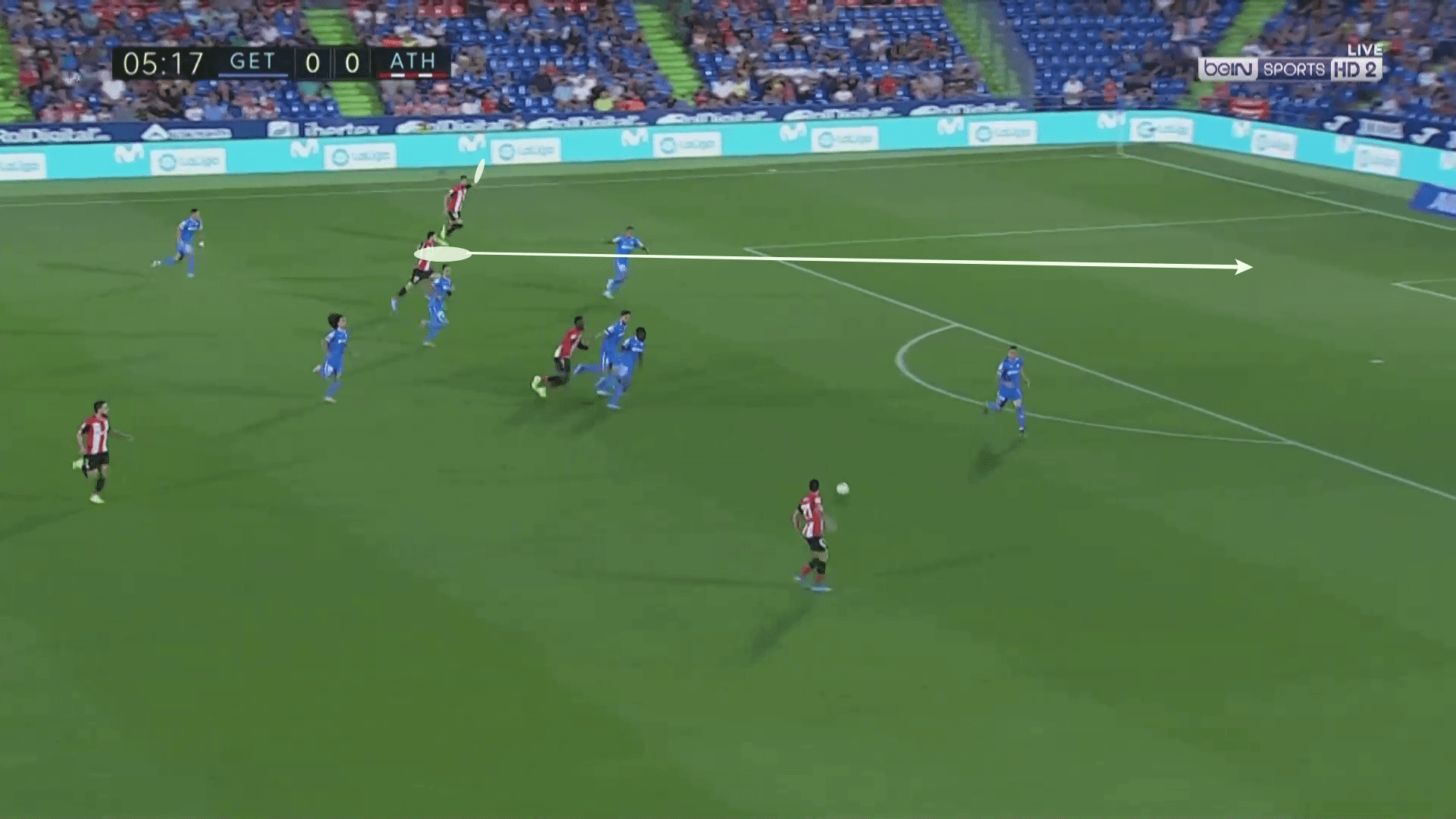
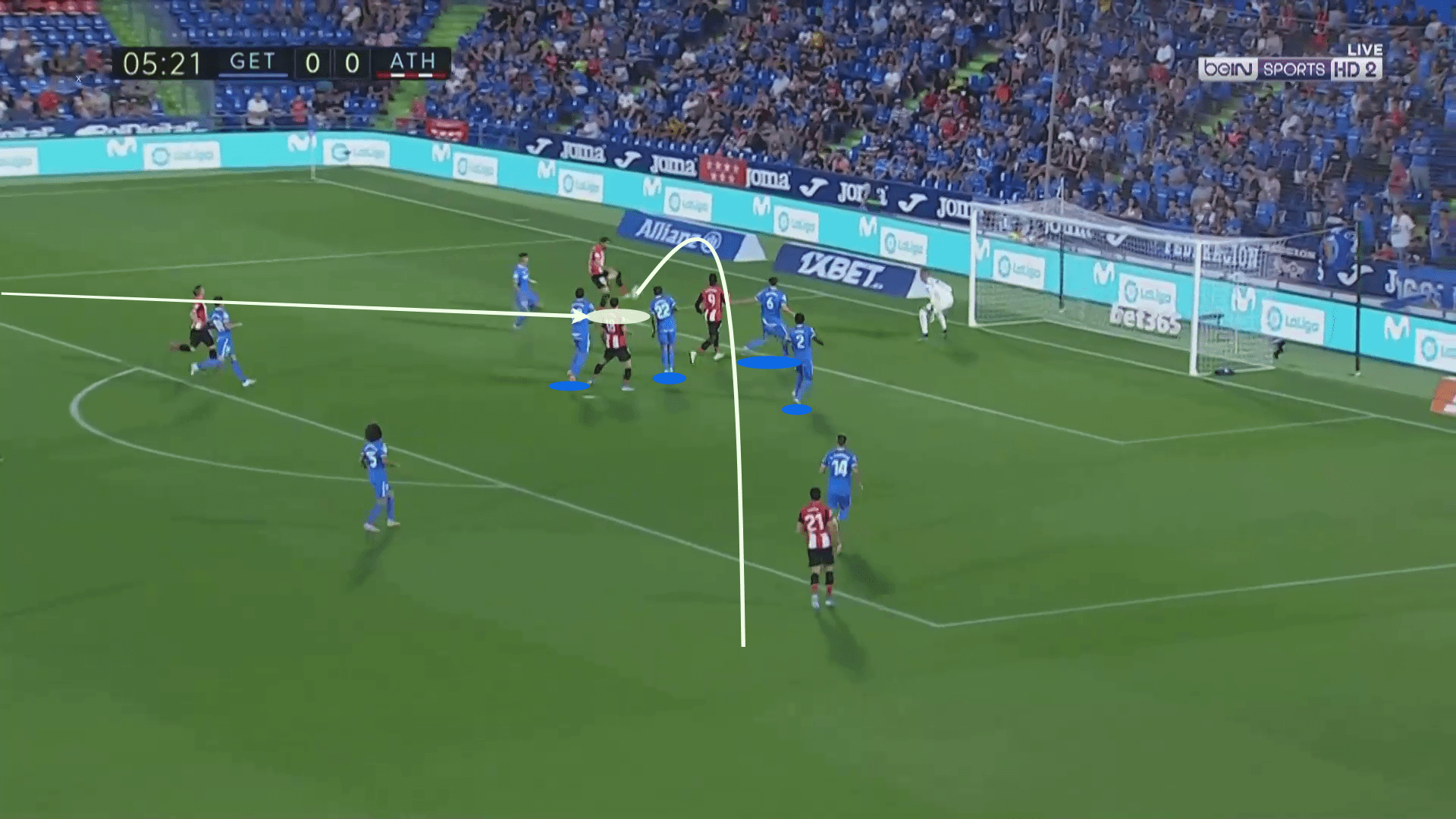
Many of his aerial battles come directly from set-pieces or goal-kicks, where he is often Unai Simon’s first-choice target. This does not help to positively reflect in his statistics but does show his importance to the side. Particularly since Aritz Aduriz has dropped out of the side, he has become the key target man when looking to play a long ball and hold up play. This reflects how his role is a crucial one, not only in winning the initial header, but also in protecting possession afterwards.
Clinical finishing
What has been perhaps most impressive from García in the opening weeks of 2019/20 has been his incredible conversion rate. In the two games in which he has scored, he has recorded just 0.11 xG combined, finding the back of the net with both of his two shots on goal. His strike against Real Sociedad showed his lethality when looking to apply the finishing touch but also his daring nature. Receiving the ball on the edge of the penalty area, he took a single touch and already under pressure from onrushing defenders looked to loop the ball over goalkeeper Miguel Ángel Moya in a shot which was worth just 0.02 xG.
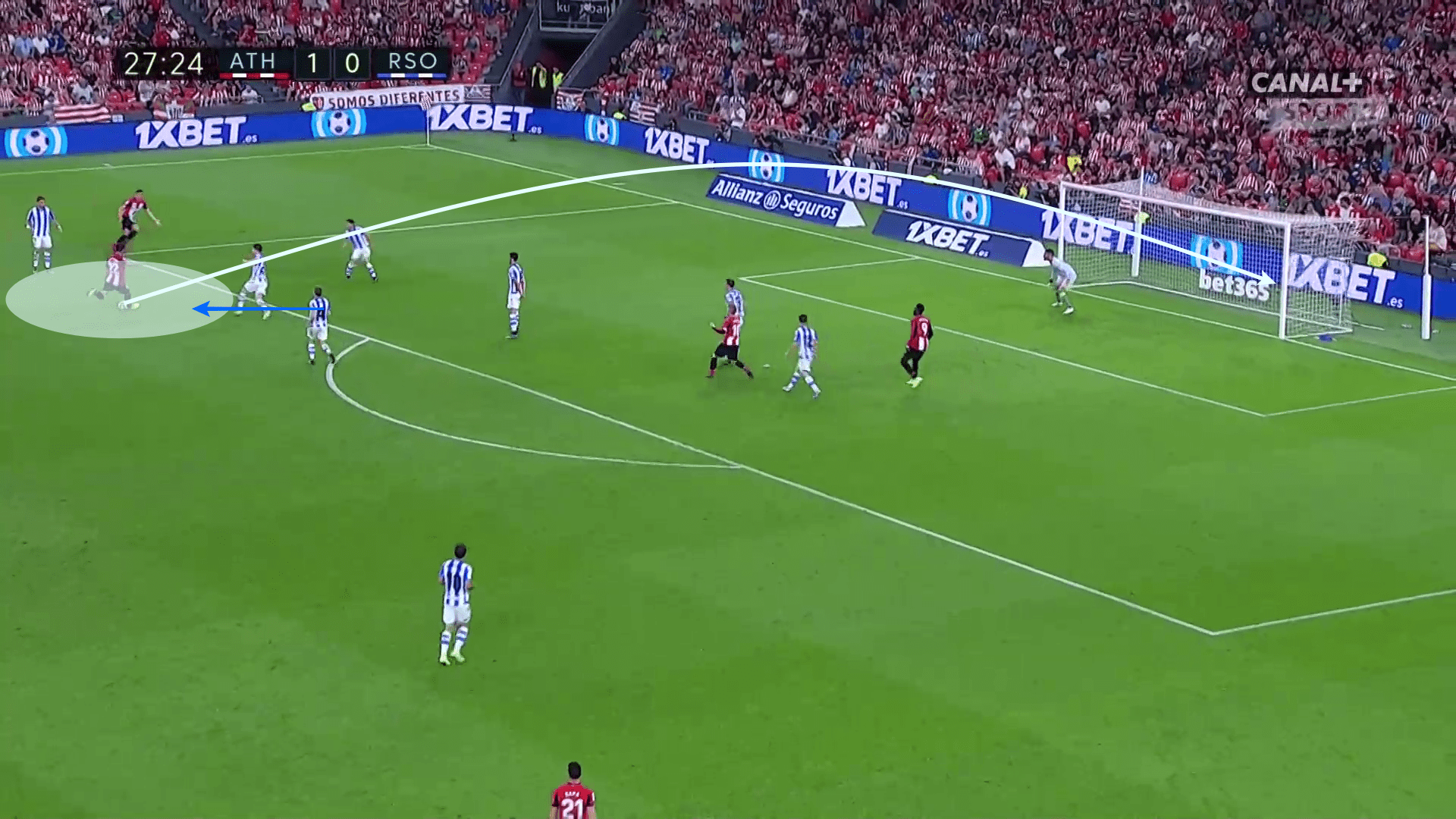
Since xG records begin in 2015, García has equalled or surpassed his xG with his goal tally, proving a clinical finisher. That is despite being far from an out and out goal-getter or a fox in the box. Having such a threat is essential for Athletic, who have been without a prolific goalscorer for some time as Aduriz struggles with injury as he nears retirement and Iñaki Williams continues to work on his finishing and adding the final touch.
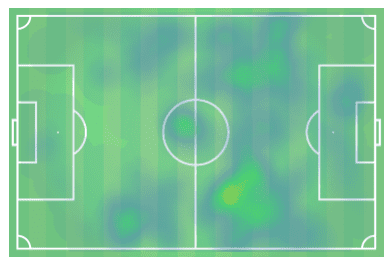
As his heatmap shows, García tends to sit in a deeper role and rarely makes runs into the box. When he does so, as shown against Getafe earlier on in this analysis, it is through a perfectly timed run at the far post. Other than that, he tends to have his efforts from deep, looking to take a chance from outside the box. Increasingly, this has become an element of his game since Garitano’s arrival when coming up against defences who are happy to sit in deeper positions.
A defensive outlet
Despite all that García offers in terms of attacking contribution and threat, it is perhaps as an outlet for his defence that he is most valuable in Garitano’s set-up. García typically positions himself in front of the midfield, with the three or four other men lining up in a block alongside him and slightly behind when in the defensive phase. As soon as the ball is turned over, the ball is distributed to García, who will immediately look to play a direct pass down the channels for Williams or Iker Muniain to run on to.
This is far from ideal for his passing statistics, with just 51.9% of forward passes being completed, and rarely provides an attacking opportunity, but does offer a key outlet. Particularly against stronger sides, such as Barcelona, García is afforded more time and space to clear the ball and he drops deeper to take advantage, looking to capitalise on Williams’ pace to convert a hopeful long ball into a chance.
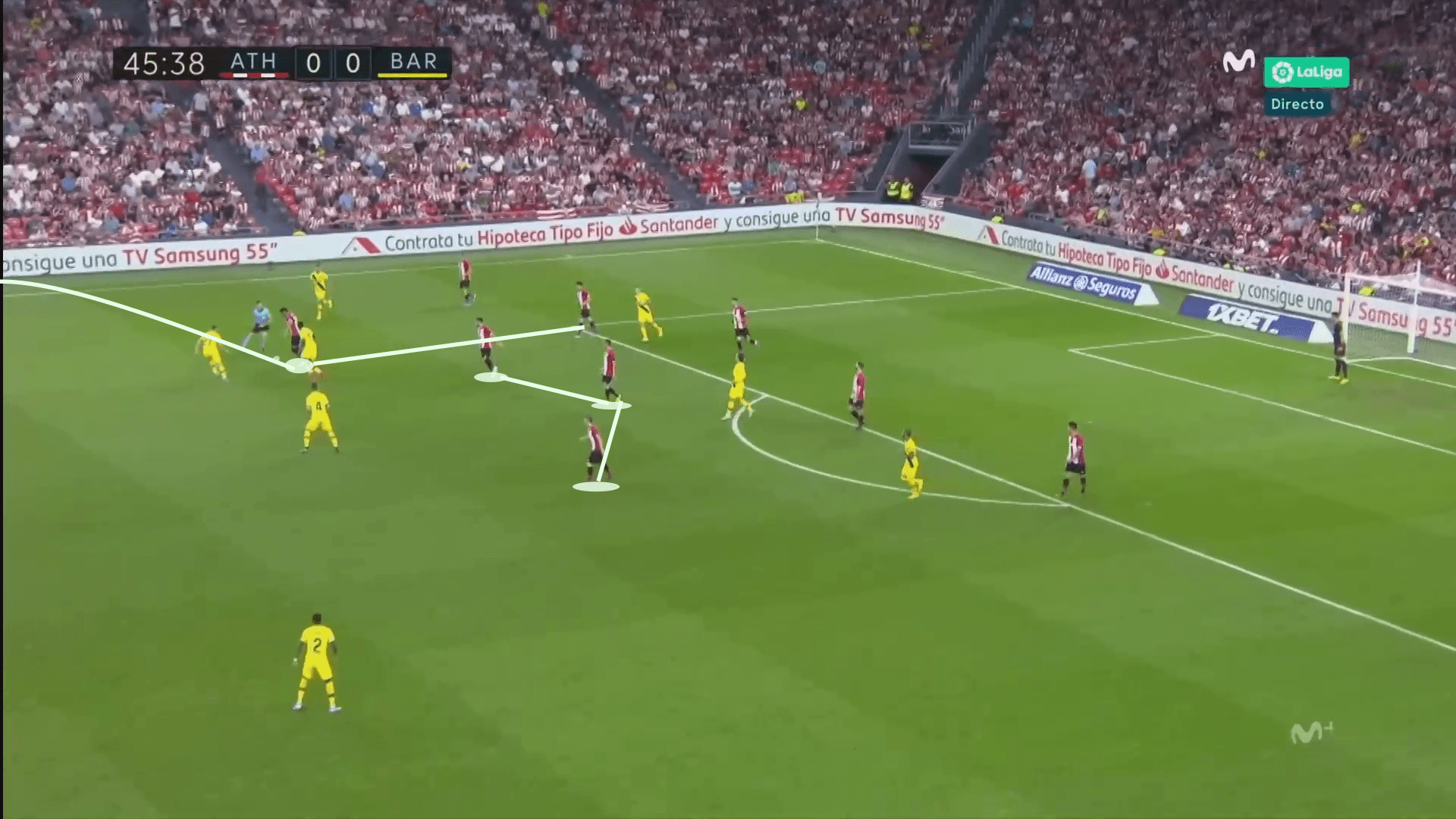
The main value that this brings is to release the pressure on his own defence, immediately shifting defence to attack, even if it may rely on a hopeful sprint from his team-mate. With just four assists in 2018/19, the most recent in La Liga coming in October 2018, it is clear that he is not a playmaker in the attacking midfield role. Instead, once out of possession, he drops far deeper and looks to provide a key way out of defence to ease the pressure, looking to play a quick pass to help his backline move out, rather than waiting to pick the perfect pass. It will not suit all sides, but for Garitano’s approach, it’s ideal.
Conclusion
García is a raw and traditional player. Built around physicality and certainly rough around the edges, there are few La Liga sides where he would fit in. In Garitano’s Athletic Club and previously Diego Simeone’s Atlético Madrid, he has built a career around fitting in perfectly to the sides that he is playing for. Offering value in both defence and attack, he is the kind of player who may not make many headlines but consistently offers a threat with his excellent finishing and impressive transitional play. Even as he ages, García continues to play a vital role for Athletic.

If you love tactical analysis, then you’ll love the digital magazines from totalfootballanalysis.com – a guaranteed 100+ pages of pure tactical analysis covering topics from the Premier League, Serie A, La Liga, Bundesliga and many, many more. Buy your copy of the August issue for just ₤4.99 here.





Comments